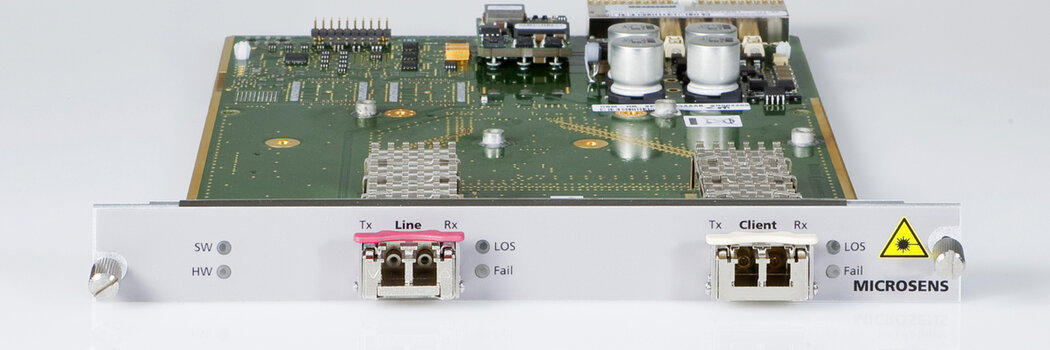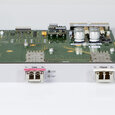The card is equipped with a fixed fiber optic port with LC connection on the line side. Depending on the user's needs, this port can support either DWDM or single mode signals and is available in ranges of either 40, 60, or 80 km. Connecting clients on the access side is done using standard XFP plugins for multimode or single mode fiber.
Comprehensive management functions
The module can be managed via SNMP and is designed to connect to the central MICROSENS Network Management Platform (NMP). An additional DDM (Digital Diagnostics Monitoring) function serves as a status monitor communicating information on transceiver temperature and usage rate. To supplement this, the expansion card supports diagnostic loopback testing of individual fiber optic connections. Effective immediately, the expansion card is available under reference number MS430555M.












